
Download the PDF of this article
'One fine day, in the middle of May, The ladybird went on holiday…’ and the pre-school children at Evolution Childcare @ The Stables Nursery in Lower Whitley, Cheshire avidly followed their favourite book character’s adventures as she sent postcards to them from around the world.
The nursery staff link their topics to the children’s interests, so when they were considering their upcoming Around the World topic they wanted to bring in the children’s favourite book, What the Ladybird Heard by Julia Donaldson. Its sequel, What the Ladybird Heard on Holiday, provided the perfect peg.
Staff were inspired to put a request on Facebook for friends and family to send the nursery postcards on behalf of the ladybird from their homes or travels. Staff members even sent them from their holidays and then tried to beat the postcards home. They never expected that their online request would go viral and that they would receive 126 postcards from 40 different countries.
‘There’s a doorbell on the pre-school room door and every day it would ring as the postman arrived with more postcards, and the children were ecstatic,’ says assistant deputy manager Danielle Mason. ‘They were excited to look at the different postcards and they prompted tonnes of questions, explorations and learning.’
ON THE MAP
Staff put a large world map on the wall and hung the different postcards on the locations that they had been sent from, linking them to the nursery’s North-West England location with string and pins. There were 33 postcards alone from locations across England and they spread out to cover most continents with mail from countries including Poland, Italy, USA, Thailand, China and two travelling all around the world from New Zealand.
The children were particularly excited by a postcard from Lapland in Finland which had a picture of Father Christmas on the front – some children believed it was actually sent by him. They were also intrigued to compare postcards that they received from Disneyland Paris, France and Walt Disney World in Florida, USA. Staff were really pleased to receive a postcard from a family who had attended the nursery before emigrating to Australia; photos of the children were on the front.
While some of the postcards were written from the ladybird, others had facts about the particular country or were addressed to specific children with stories of their travels.
‘Receiving the postcards meant that we looked at countries that even the staff didn’t know much about. We were able to learn more about the countries together and follow the children’s interests to see where that would lead us – whether it was to research what animals live there or what famous buildings there are,’ says Ms Mason.
Children enjoyed identifying the range of countries on a globe, finding them on the big wall map and also researching them in an atlas. They would make comments such as, ‘It’s so tiny’, and compare the size of the country to the UK – which they were surprised to see was small compared with many other countries.
It led to discussions about time zones and that we are awake while people on the other side of the world are in bed. Also, postcards featuring snow or tropical beaches sparked questions around different seasons and also how some countries are hotter or colder depending on where they are in relation to the equator and the country’s geography.
The children liked to know who had sent the postcard and enjoyed using the internet to look up the different ethnicities and find out more about what the geography of the country looks like, what animals are native to it and the types of food eaten there.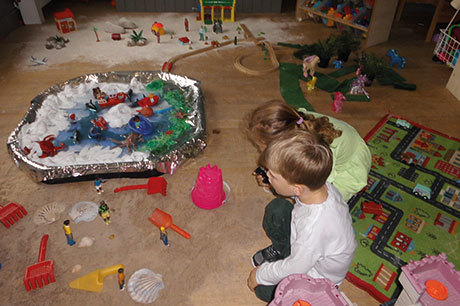
DELIVERING THE MAIL
Receiving so much post motivated the children to want to learn more about the postal service and how the postcards were getting to them. They looked at the map to see whether it was possible to transport the postcards by road and discussed how else they may travel, with the children discussing aeroplanes and boats. This led to some children exploring vehicles including postal vans, talking about flying and experimenting with floating and sinking.
Staff introduced the children to how to address mail – using house numbers, place names and postcodes – so that the postman knows where to deliver it to, and that stamps are used to pay for the postage. They spoke about how air mail is used to get the majority of post from abroad to the UK and that Royal Mail distributes most of the post in our country. They also researched sorting offices online and looked at how the post is sorted before it is ready to be dispatched to individual addresses.
GETTING CREATIVE
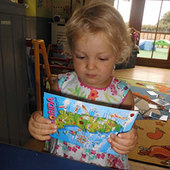 Children were inspired by the project to make their own postcards. They drew pictures on the front or cut out images and stuck them on before narrating to the staff what message they wanted to send home to their parents. They then wrote their own names on the cards and stuck on address labels and stamps before putting them in the post box.
Children were inspired by the project to make their own postcards. They drew pictures on the front or cut out images and stuck them on before narrating to the staff what message they wanted to send home to their parents. They then wrote their own names on the cards and stuck on address labels and stamps before putting them in the post box.
‘The children were really excited for their postcards to arrive at home and the parents loved receiving them,’ says Ms Mason. ‘The parents also enjoyed looking at the world map with the children, seeing where all the post had been received from and discussing the different countries with the children.’
The project also led to the children looking at famous buildings from around the world and constructing their own using building blocks, salt dough and clay modelling. They were particularly interested in the Eiffel Tower in France, the Leaning Tower of Pisa in Italy, India’s Taj Mahal and Big Ben in England.
LADYBIRD, LADYBIRD…
The travelling ladybird was not forgotten during all the excitement. The children loved to act out different stories involving Hefty Hugh and Lanky Len, especially whispering to each other, which prompted staff to introduce them to the game of Chinese Whispers, which they found funny.
Coincidentally, a lot of ladybirds hatched in the nursery garden during the summer and the children kept seeing them. ‘There were hundreds in the garden and the children kept asking where they had travelled and whether they’d been on holiday,’ says Ms Mason.
She adds, ‘Both children and staff were very enthusiastic and involved in the topic and we are amazed at how successful it was. By following the children’s interests we were able to cover the whole EYFS from speech and language to expressive arts and design, physical skills and the intended understanding of the world.’
BOOK CORNER
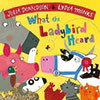 Fiction
Fiction
What the Ladybird Heard
by Julia Donaldson
Hefty Hugh and Lanky Len are two crafty robbers with a cunning plan, but they don’t factor in the quiet ladybird who’s ready to foil their plot to steal the fine prize cow.
What the Ladybird Heard on Holiday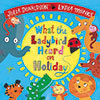
by Julia Donaldson
Those two bad men are back and plotting to steal a monkey from the zoo and use it to pinch the Queen’s crown, but a crime-busting ladybird is holidaying in the same city.
 The Jolly Postman
The Jolly Postman
by Janet and Allan Ahlberg
Join the postman as he delivers cards and letters to various fairy-tale characters on his postal round in this classic story.
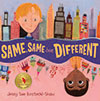 Same, Same But Different
Same, Same But Different
by Jenny Kostecki-Shaw
Elliot lives in America and Kailash lives in India. Through writing to each other they learn that their countries may look very different but their lives are actually very similar.
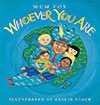 Whoever You Are
Whoever You Are
by Mem Fox
Every day all over the world children are laughing, crying, eating and playing. They may not all look the same, but inside they’re alike.
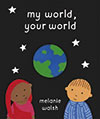 My World, Your World
My World, Your World
by Melanie Walsh
Pierre says ‘Bonjour’. George says ‘Hello’. But they both say ‘Achoo!’ when they sneeze. Despite speaking different languages and living different lives they are basically the same.
Non-fiction
 Children’s Illustrated Atlas
Children’s Illustrated Atlas
by Andrew Brooks
This DK atlas has more than 50 colourful maps including information on climates, populations, famous sites and the natural wonders of the world.
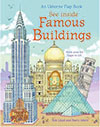 See Inside Famous Buildings
See Inside Famous Buildings
by Rob Lloyd Jones
Discover and explore some of the world’s most recognisable buildings from Notre Dame cathedral to the Empire State Building and the Leaning Tower of Pisa.









